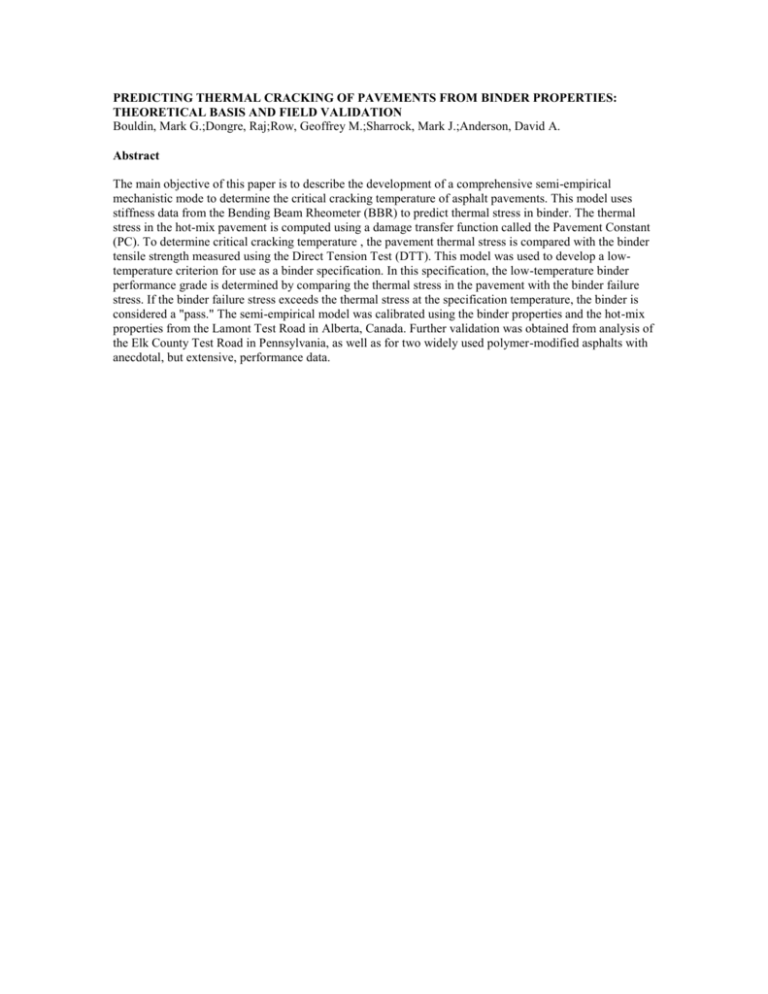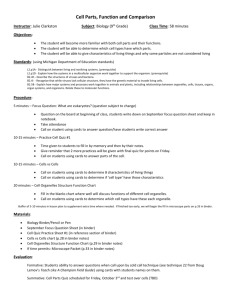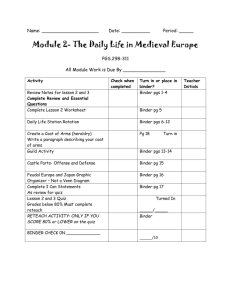predicting thermal cracking of pavements from binder properties
advertisement

PREDICTING THERMAL CRACKING OF PAVEMENTS FROM BINDER PROPERTIES: THEORETICAL BASIS AND FIELD VALIDATION Bouldin, Mark G.;Dongre, Raj;Row, Geoffrey M.;Sharrock, Mark J.;Anderson, David A. Abstract The main objective of this paper is to describe the development of a comprehensive semi-empirical mechanistic mode to determine the critical cracking temperature of asphalt pavements. This model uses stiffness data from the Bending Beam Rheometer (BBR) to predict thermal stress in binder. The thermal stress in the hot-mix pavement is computed using a damage transfer function called the Pavement Constant (PC). To determine critical cracking temperature , the pavement thermal stress is compared with the binder tensile strength measured using the Direct Tension Test (DTT). This model was used to develop a lowtemperature criterion for use as a binder specification. In this specification, the low-temperature binder performance grade is determined by comparing the thermal stress in the pavement with the binder failure stress. If the binder failure stress exceeds the thermal stress at the specification temperature, the binder is considered a "pass." The semi-empirical model was calibrated using the binder properties and the hot-mix properties from the Lamont Test Road in Alberta, Canada. Further validation was obtained from analysis of the Elk County Test Road in Pennsylvania, as well as for two widely used polymer-modified asphalts with anecdotal, but extensive, performance data.











